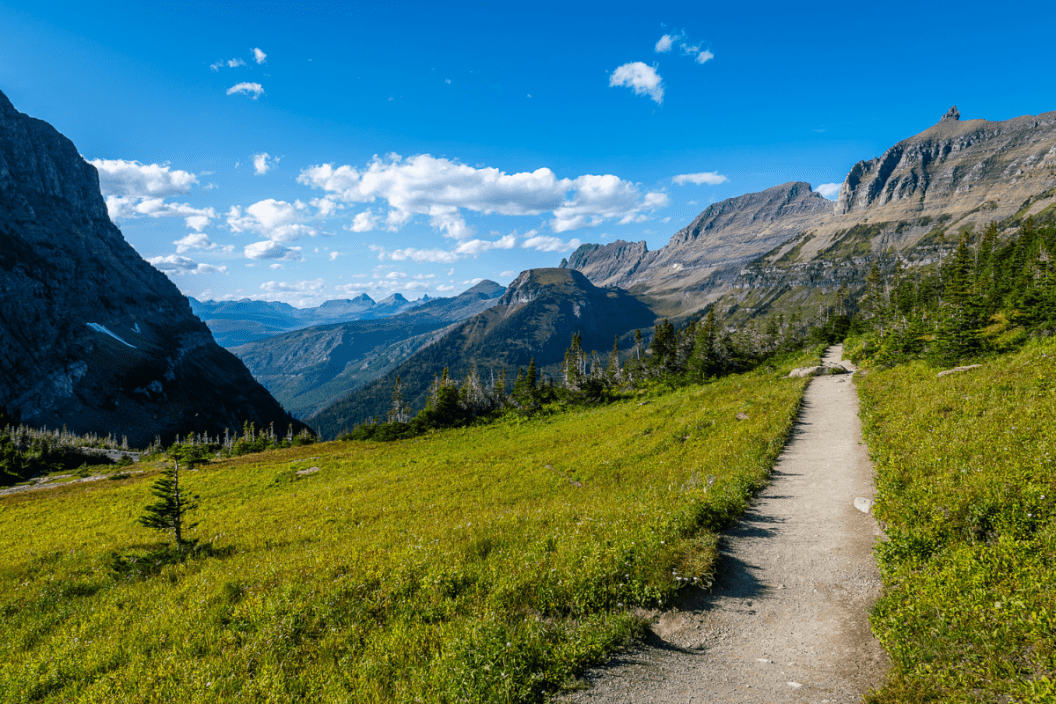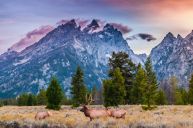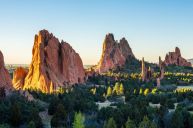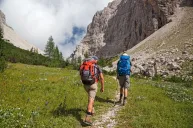Have you ever been followed by a grizzly bear for a mile? I have, and it happened at Glacier National Park.
Talk about an adrenaline rush and an experience of a lifetime. This is the raw, wild beauty one may be lucky enough to encounter here and in a few other places. There's a good reason Glacier National Park, in northwestern Montana near the border of Canada, is one of our most famous national parks. On the west of the park are the towns of Whitefish and Kalispell; on the east side, you'll find Shelby and Great Falls.
Glacier National Park lies on the ancestral lands of the Blackfeet, Salish, and Kootenai nations. This area is rich in cultural history and is of the highest significance to the Indigenous nations that call these lands home.
Glacier is massive and wild, yet it can be crowded and clogged with traffic. If you don't have a plan of what you want to do and see, you may end up disappointed with your dream trip to this iconic park. Below are my personal picks of how to see Glacier and what you absolutely cannot miss.
Glacier National Park 101

HaizhanZheng via Getty Images
Glacier National Park comprises 1 million acres of glacier-carved valleys, ancient forests, stunning peaks that seem to touch the sky, crystal clear lakes and streams, 26 glaciers, and is home to over 70 different mammal species. The park offers over 700 miles of hiking trails and opportunities for short hikes and multi-day backpacking, biking, fishing, and bus tours.
The park is separated into six areas. The most easily accessible areas are West Glacier, East Glacier, and Many Glacier, with West Glacier being the most popular. Suppose you're planning a visit for more than a week. In that case, I highly recommend checking out Glacier's other three areas: Two Medicine Lake, Goat Haunt, and Polebridge.
They all offer some incredible adventure opportunities and fewer crowds. Suppose you're staying a week or less. In that case, however, I recommend focusing on the most popular three: there's more than enough to keep you busy.
West Glacier Hikes
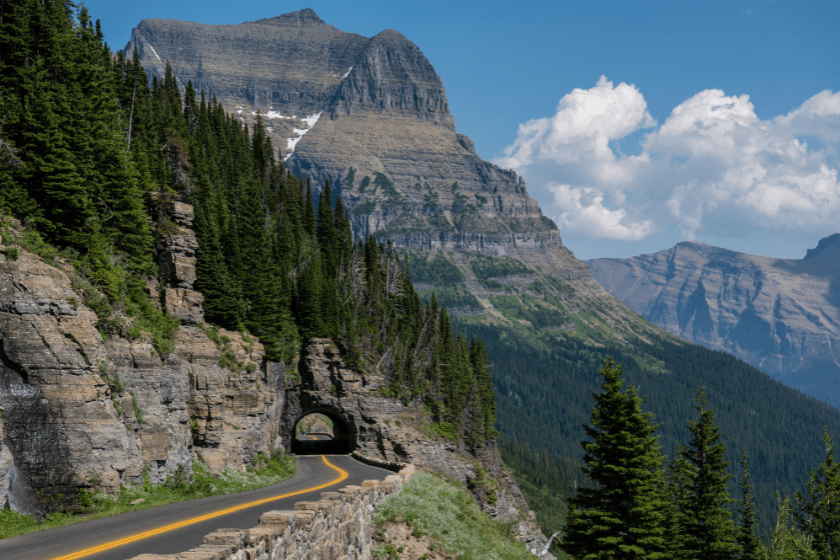
SED Photography via Getty Images
You've probably heard of the famous Going-to-the-Sun Road more than once. It's dubbed one of the most scenic drives globally, and it certainly earns that distinction. West Glacier is where you'll find it. I highly recommend taking this narrow, winding 50-mile stretch through the park.
It is undoubtedly one of the most picturesque, breathtaking drives in North America. It takes you through cedar forest valleys, glacial lakes, and the top of alpine tundra peaks. However, know that to enter this road, you will need an entry reservation ahead of time (which is separate from the park entrance fee). Find both road passes and park entrance here.
Lake McDonald is a must on your first stop at the West entrance. This 10-mile-long, glacier-carved lake is nearly 500 feet deep. The picturesque clear blue lake will draw you in with its vibrant rainbow-colored rocks of shades of blue and green and its incredible views of surrounding peaks. The Apgar Visitor Center and Lake McDonald Lodge are also located at the West entrance.
In West Glacier, you will find some of the most well-known hikes in the area, including Avalanche Lake and Highline Loop. Avalanche Lake is a 6-mile stroll that takes hikers to a stunning glacier-carved lake with a gorgeous mountain bowl and waterfalls cascading into the lake as a backdrop. Believe me, it's as insanely beautiful as it sounds.
Remember the bear encounter I spoke of? That was on the Highline Trail Loop. Highline Trail is a must-do if you're up for an adventurous 12-mile hike. This route follows along the Continental Divide (also known as the Garden Wall), offering excellent opportunities for wildlife viewing, wildflowers, and some of the most scenic views in the park.
The hike climbs to an elevation of 6,500 ft at Logan Pass, the highest point accessible by vehicle in the park. I don't think it's an exaggeration to say this is a hike you'll remember for the rest of your life.
East Glacier Hikes
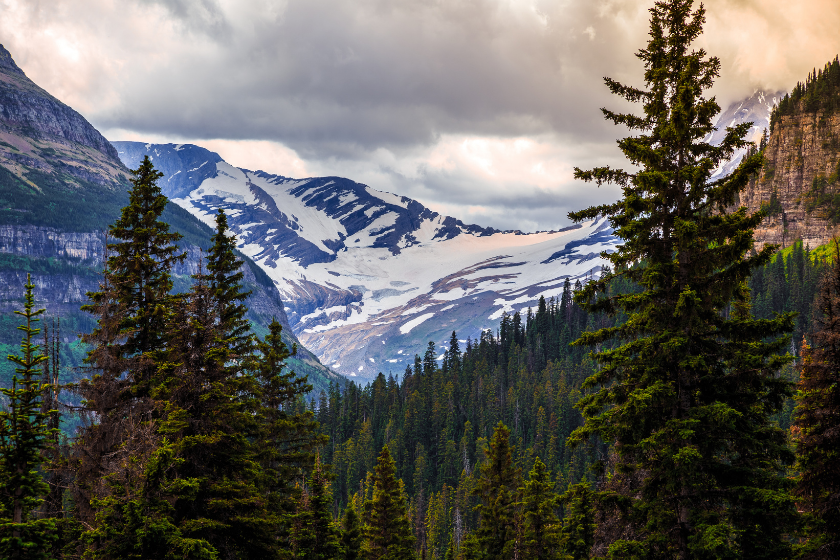
Bartfett via Getty Images
Keep going past Logan Pass on the Going-to-the-Sun Road, and the next 17-mile stretch brings you through East Glacier, down from the heights to St. Mary Lake and the town of St. Mary. Along this part of the scenic drive, you'll pass by the Jackson Glacier Overlook and several impressive waterfalls.
This East entrance is slightly less populated than West Glacier. It provides several lodging accommodations like chalets, historic lodges, and campgrounds.
As far as the best hikes in East Glacier are concerned, I suggest checking out the Haystack Butte Trail (moderate 8-mile trail with beautiful views), Dawson Pass (difficult 18-mile backcountry trail for backpacking and camping), and Scenic Point (challenging 7.4-mile course with scenic views and camping).
Many Glacier Hikes
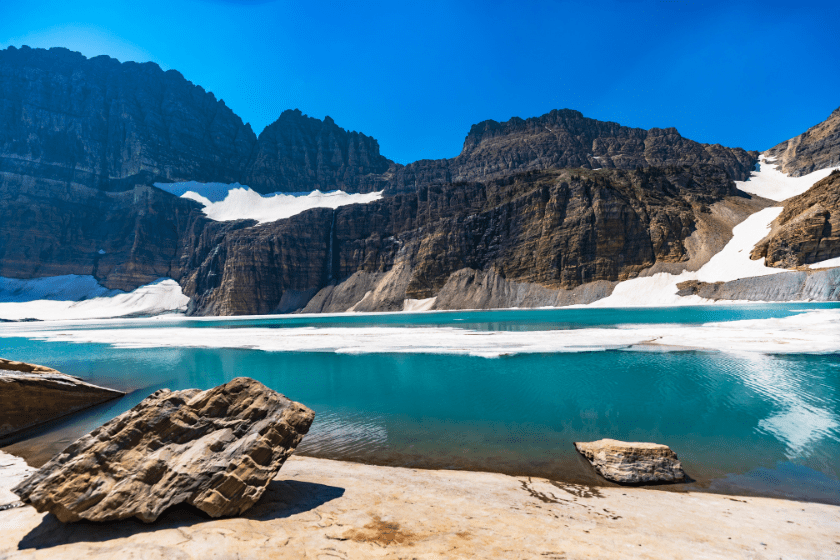
Katie Berdan Wolden via Getty Images
To get to Many Glacier, you must exit the park through the east entrance and re-enter near Babb. This area has a ton of hiking opportunities and will be less visited than the other two entrances. The site also holds many different lakes and a unique opportunity to take boat tours.
My favorite hikes in Many Glacier include Grinnell Glacier (absolute must-see 11-mile hiking with glaciers, waterfalls, lakes, forest, wildlife, and incredible views along the way), Iceberg Lake (panoramic views for most of the trail, ending at Iceberg Lake, named for the icebergs that float in the lake all year), and Redrock Falls (easy 3-mile hike bringing you to picturesque Redrock falls).
Best Camping in Glacier National Park

Gabriel Cristurean via Getty Images
At the West Entrance, try to stay at the Apgar Campground. This site is the largest campground in Glacier National Park, located on the Going-to-the-Sun Road, less than three miles from the West Entrance. From the campground, it's only a short walk to Apgar Village, where restaurants, gift shops, and camping supplies can be found.
At the East Entrance, St. Mary Campground is located near the banks of St. Mary Lake, and a short hiking trail connects the campground to the St. Mary Visitor Center. At the Visitor Center, visitors pick up the free Going-to-the-Sun Road shuttle to explore the rest of the park. It's reservation only during peak season.
At the Many Glacier Entrance on the east side of the park, the Many Glacier Campground is surrounded by day hikes, wildlife, and big mountain attractions. It's next to the Swiftcurrent Motor Inn-a combination gift shop, restaurant, and lodging option.
Glacier's Native America Speaks Program
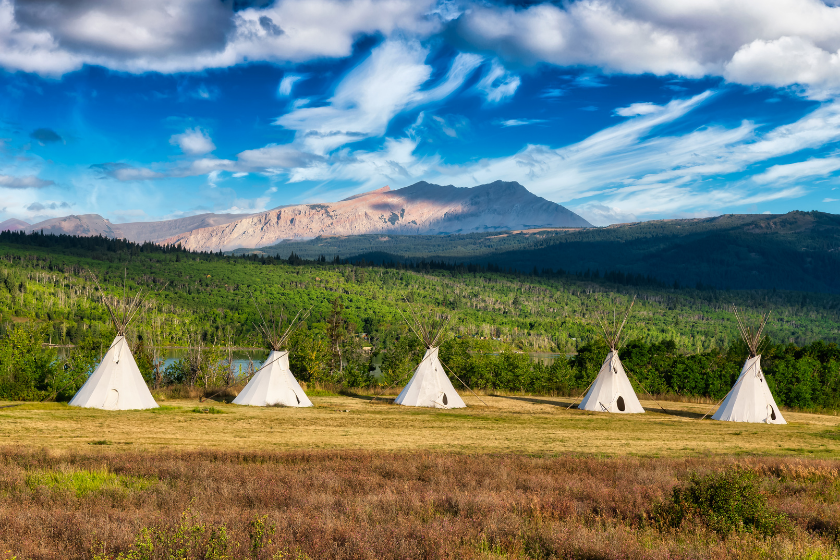
edb3_16 via Getty Images
Finally, I strongly encourage you to plan your visit around one of Glacier's Native America Speaks events. For the past 39 years, Native America Speaks program has been the cornerstone of Glacier's tribal community engagement project.
Native America Speaks the longest-running Indigenous speaker series in the National Park Service, hosting 100 events in Glacier each year, attended by more than 7,500 visitors. This award-winning program provides a unique window into the meaning and history of the place we now call Glacier National Park from the different perspectives of the Blackfeet, Salish, Pend d'Oreille, and Kootenai peoples.
Watch this insightful video on the program here.
It is essential to acknowledge that, as with every national park in the US, these areas are all considered sacred to tribal nations of each region. Tribes were forcibly removed and relocated to reservations outside of park boundaries for National Parks to exist. I hope that the NPS will build better relations with tribal nations in honoring our history and connection to these sacred lands. Glacier National Park is a leading example of making this type of relationship.
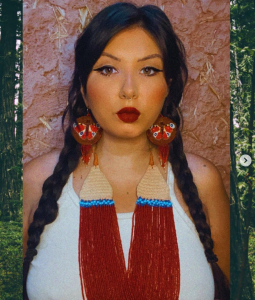
Wynn?" Weddell is a proud member of the Ihanktonwan (Yankton Sioux) nation who lived in the Pacific Northwest. She is on the team at Diversify Vanlife, a platform dedicated to amplifying BIPOC voices in outdoor spaces and advocating for environmental consciousness within the nomadic community. Instagram: @rainbowmountain_
Have you ever been to the Black Hills of South Dakota? Share your experience with us on Wide Open Roads Facebook!
READ MORE: A Guide to Exploring South Dakota's Beautiful Badlands National Park
